If you want a savory, protein-rich dish, bò kho (Vietnamese beef stew) is a perfect answer.
You may wonder how your common beef stew differs from the Vietnamese version. Though the melt-in-your-mouth tenderness of the meat is the same, what I’m about to show you will stimulate your nose and taste buds tremendously, thanks to a liberal amount of spices.
The side herbs that bear the mark of a tropical country teeming with vegetables are another interesting feature. Let’s dive into this guide to learn more!
Interesting Things to Know about Vietnamese Bò Kho
Bò kho means “braised beef” (“kho” is a cooking technique close to braising), but this recipe is actually a stew.
Compared to other famous traditional dishes, Vietnamese beef stew is relatively new. People created it sometime around the mid-20th century in Southern Vietnam. Local Chinese communities had a great influence on the regional cuisine, contributing to its differences from Western counterparts.
In Vietnam, locals usually serve this stew dish with short, crisp-crusted Vietnamese baguettes and aromatic herbs. The latter creates an amazing symphony of flavors in your mouth, from savory beef, tender stewed vegetables, mildly sweet bread, and strong, peppery herbs.
That’s why many Vietnamese people love to cook this dish for a scrumptious family meal or intimate gatherings. It is also a popular dish for breakfast and lunch in the country. A hybrid dish known as hủ tiếu bò kho (Vietnamese beef stew with noodles) also earns the same status.
What Tools Are Used for Making Bò Kho?
As you may guess, this recipe requires the same set of kitchen tools as any beef stew, namely:
What Are Bò Kho Ingredients?
In this recipe, you may need a trip to an Asian food store to get the necessary ingredients, though online retailers and big supermarkets may offer what you need. Here is a list of these components:
While you can buy commercial Vietnamese beef stew seasoning, I recommend making your own to customize it to your liking.
Instructions for Cooking Bò Kho
Have you got all the ingredients yet? It’s time to treat yourself to an amazingly fragrant version of beef stew with only 4 steps.
Step 1: Prepare The Vegetables
Cut the carrots into thick slices (but still thin enough to cook evenly). You can increase the visual appeal of the dish by turning the slices into flowers.
Cut the onion into wedges. For the tomatoes, quarter them and dice into cubes.
Use a mini chopper to mince lemongrass, garlic, and shallots separately. To make this process smoother, you should slice the lemongrass stalks first. Don’t mince all the lemongrass: save some stalks and cut them into baton-like pieces for later.
Step 2: Marinate The Beef
Cut the beef into bite-sized cubes.
Soak the meat in a mixture of minced aromatics (lemongrass, garlic, shallots), five-spice powder, turmeric powder, ginger powder, cashew powder, black pepper, chili powder, Vietnamese fish sauce, brown sugar, and oyster sauce.
Mix vigorously and marinate for 20 – 30 minutes.
Step 3: Stew The Beef
In the mini stock pot, sear the beef cubes on all sides for a few minutes. Set aside.
Saute minced shallots and garlic in olive oil, then add tomato cubes to the pot. Stir-fry until they turn soft.
Add minced garlic and lemongrass batons, then cook until fragrant. Return the beef to the pot and give a good stir.
Add star anise, cinnamon sticks, and bay leaves to the pot. Cook for 2 minutes.
Pour coconut water into the pot and turn down the heat. Season with salt and brown sugar, then stew for 1 hour 15 minutes. Add more coconut water to the pot if the liquid evaporates during the process.
Add carrot slices and cook for another 15 minutes.
Step 4: Decorate And Serve
Remove star anise, bay leaves, cinnamon sticks, and lemongrass batons from the pot.
Turn up the heat and add onion wedges.
Mix cornstarch with a little water, then stir the mixture with the stew to thicken it.
Garnish the stew with Thai basil, scallions, and onion slices or rings on top. Now, it’s ready to serve.
Tricks And Tips for Cooking Bò Kho
Here are a few details you should know before putting your apron on. Though simple, they can make a difference in your stew.
How to Store Bò Kho Properly
If you want to save your Vietnamese beef stew for later, transfer it to a sealed container when it cools down. In theory, the fridge will help you keep it edible for 3 – 4 days, while the freezer can increase the storage time up to between 4 and 6 months.
In reality, you can push beyond that time frame, like refrigerating the stew for a few weeks. However, I suggest you finish it within the limits set above for the best experience.
Be Still With Beef Stew: Your Favorite Vietnamese Dish Is Here!
I hope you have had a whale of a time cooking this delicious stew. Has your kitchen turned fragrant with its refreshing herbal scent yet? Unlike many Vietnamese dishes that require a lot of vegetable sides, this one only asks for a few popular herbs, making it easy to prepare.
How convenient is it! I’m sure you will love it, and so will your friends if you introduce this post to them, so please do so. Feel free to ask any questions or share interesting tips in the comment section. Happy cooking, and see you soon!
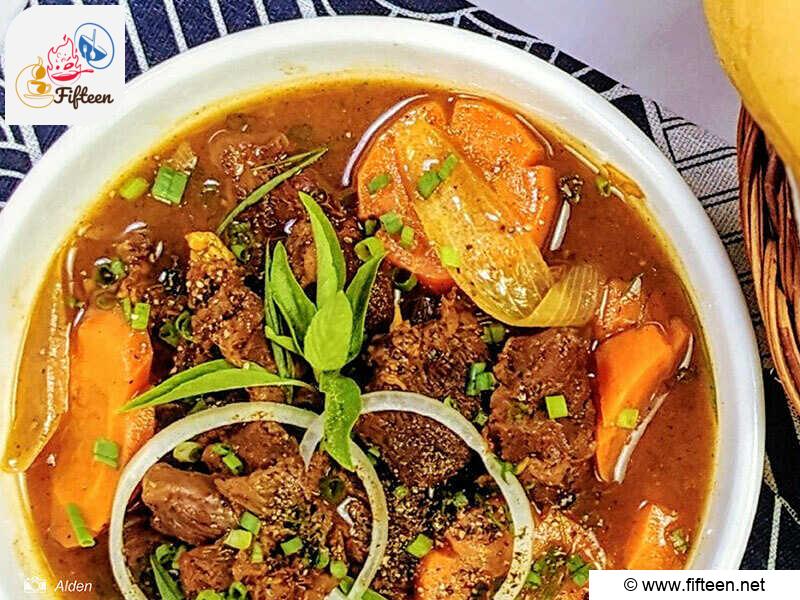
Vietnamese Beef Stew Recipe
Equipment
- Pot
- Tongs
- Spatula
- Chopping Board
- Ladle
- Knife
Ingredients
Main ingredients
- 500 grams beef shank
- 1 onion, big
- 2 tomatoes
- 2 carrots
- 1 teaspoon minced garlic
- 1 teaspoon minced shallots
- 4 lemongrass stalks
- 1 tablespoon salt
- 1 tablespoon brown sugar
- 5 star anises, whole
- 2 cinnamon sticks
- 5 bay leaves
- 1 liter coconut water
- 1.5 tablespoons cornstarch
Marinade ingredients
- 1.5 tablespoons Vietnamese fish sauce
- 1 tablespoon brown sugar
- 1 tablespoon oyster sauce
- 1 teaspoon five-spice powder
- 1 teaspoon black pepper
- 0.5 teaspoon chili powder
- 0.5 teaspoon ginger powder
- 0.5 teaspoon turmeric powder
- 1.5 teaspoons cashew powder
- 2 tablespoons minced lemongrass
- 1 tablespoon minced garlic
- 1 tablespoon minced shallots
Side dishes:
- Herbs: Thai basil, saw leaves, scallions, etc.
- 3 Vietnamese baguettes
Instructions
- Cut the carrots into suitably thick slices, ideally in the shape of flowers. Cut the onion into wedges. Quarter the tomatoes and dice them into cubes.
- Use a mini chopper to mince garlic and shallots separately. Cut the lemongrass stalks into short baton-like shapes. Slice some of them finely to mince with the chopper.
- Cut the beef into bite-sized cubes. Soak them in a mixture of minced aromatics (lemongrass, garlic, shallots), five-spice powder, turmeric powder, ginger powder, cashew powder, black pepper, chili powder, Vietnamese fish sauce, brown sugar, and oyster sauce. Mix vigorously and marinate for 20 – 30 minutes.
- Sear the marinated beef cubes on all sides for a few minutes in the mini stock pot. Set aside.
- Saute minced shallots and garlic in olive oil, then add tomato cubes to the pot. Stir-fry until they turn soft.
- Add minced garlic and lemongrass batons, then cook until fragrant.
- Return the beef to the pot and give a good stir. Add star anise, cinnamon sticks, and bay leaves to the pot. Cook for 2 minutes.
- Pour coconut water into the pot and turn down the heat. Season with salt and brown sugar, then stew for 1 hour 15 minutes.
- Then, add carrot slices and cook for another 15 minutes.
- Remove star anise, bay leaves, cinnamon sticks, and lemongrass batons from the pot.
- Turn up the heat and add onion wedges.
- To thicken the stew, mix cornstarch with a little water, then stir the mixture with it.
- Garnish with Thai basil, scallions, and onion slices/ rings on top. Serve with fresh herbs and baguettes.
Video
Notes
- You can skip the thickening step if you want to serve Vietnamese beef stew with rice or rice noodles.






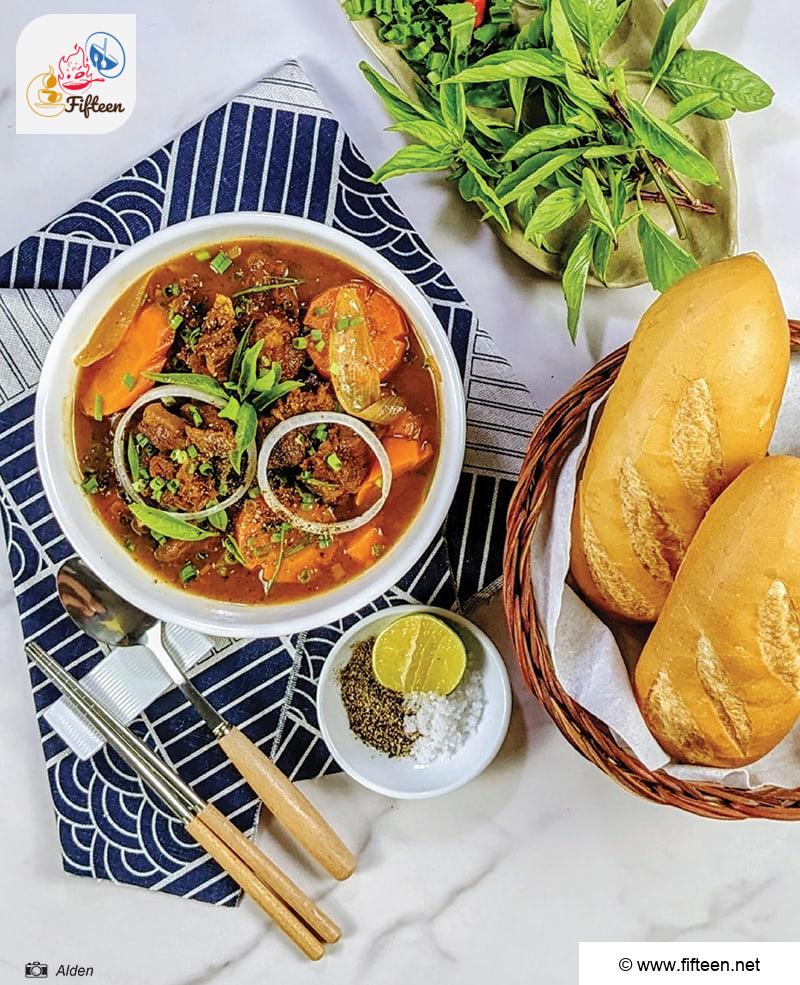
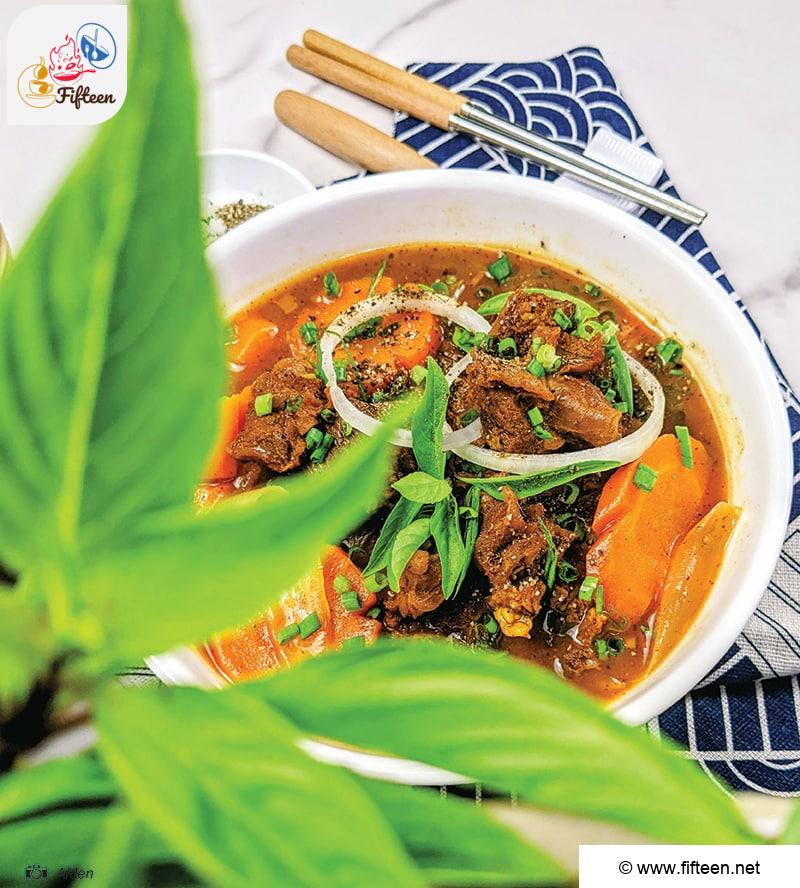
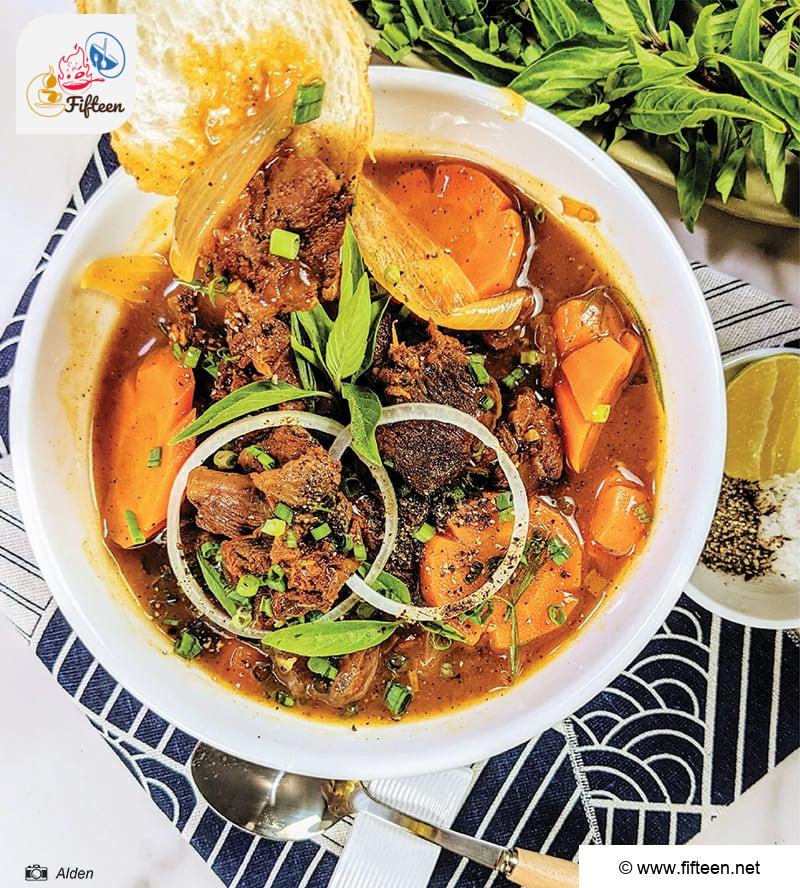
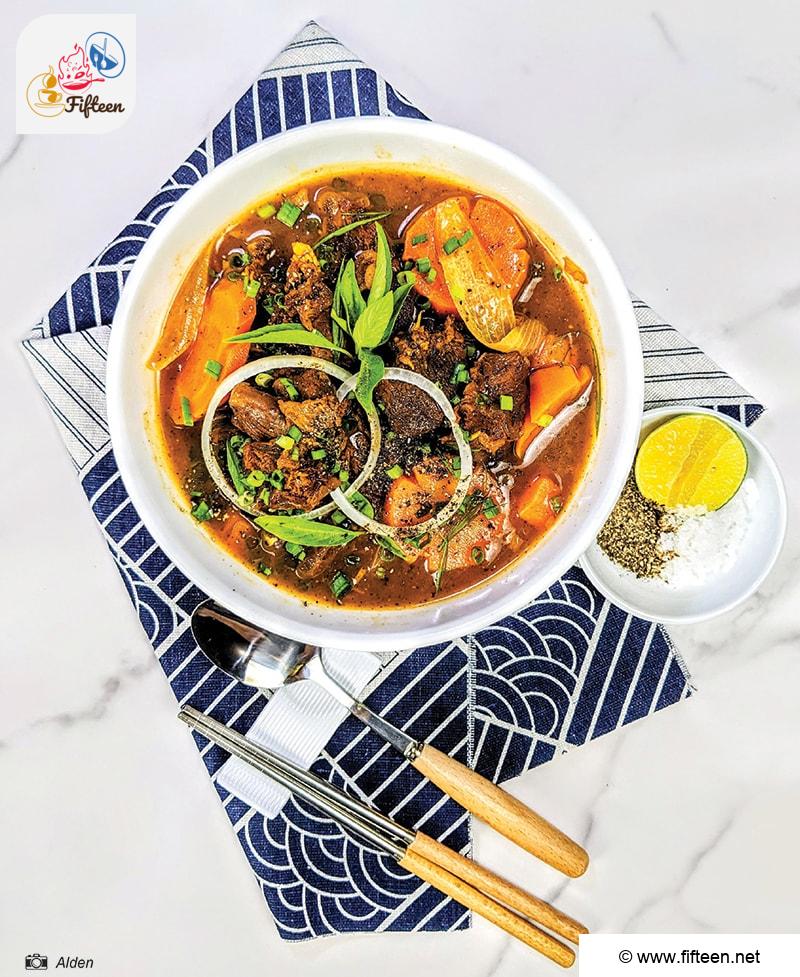
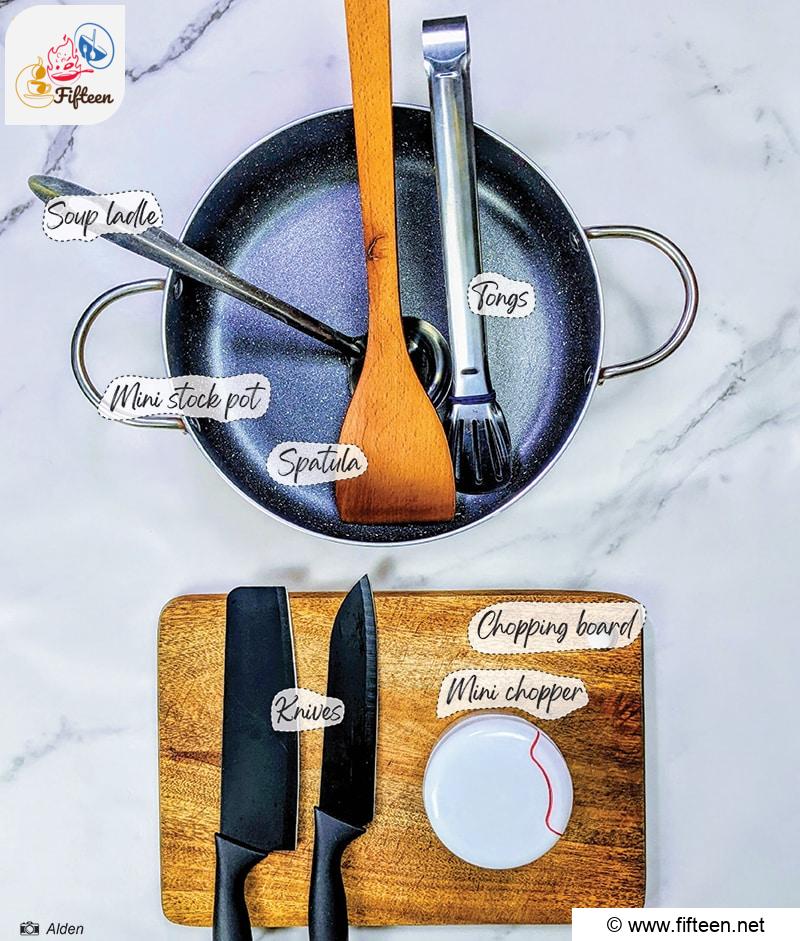
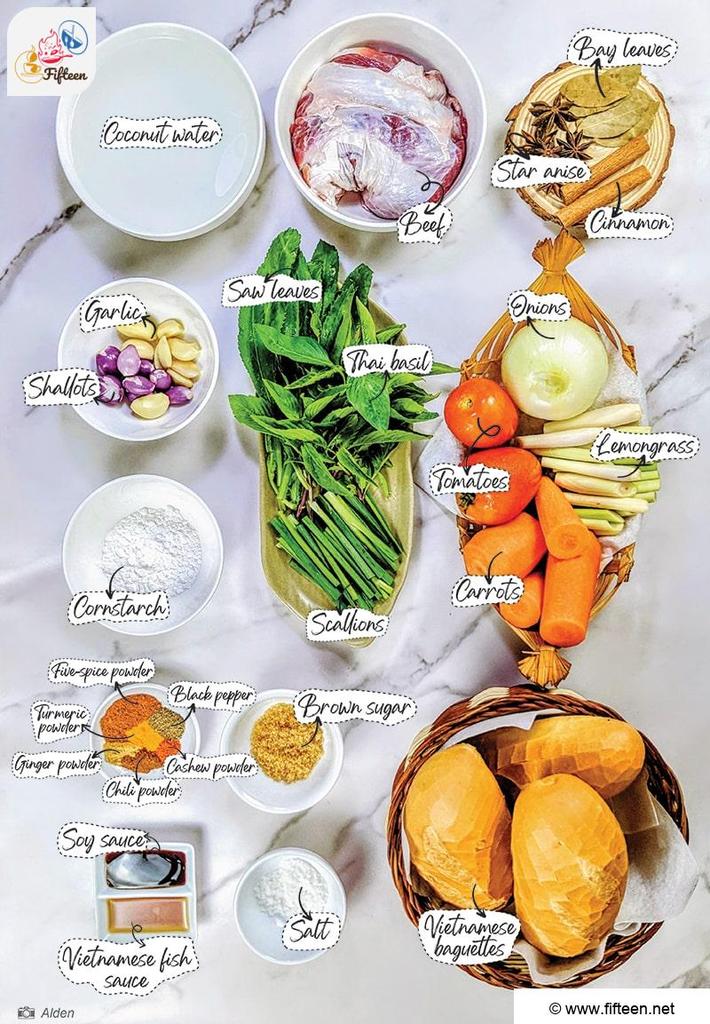
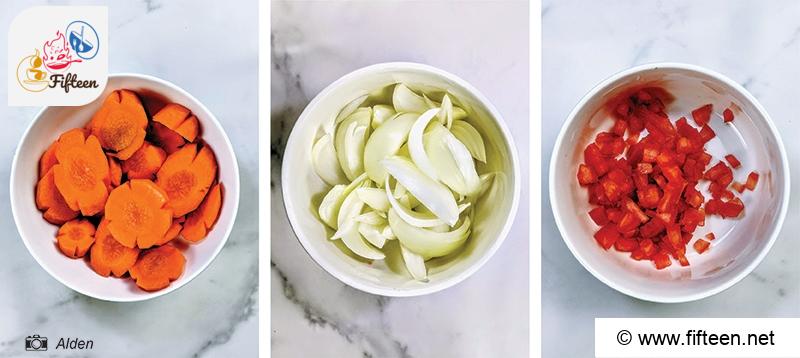
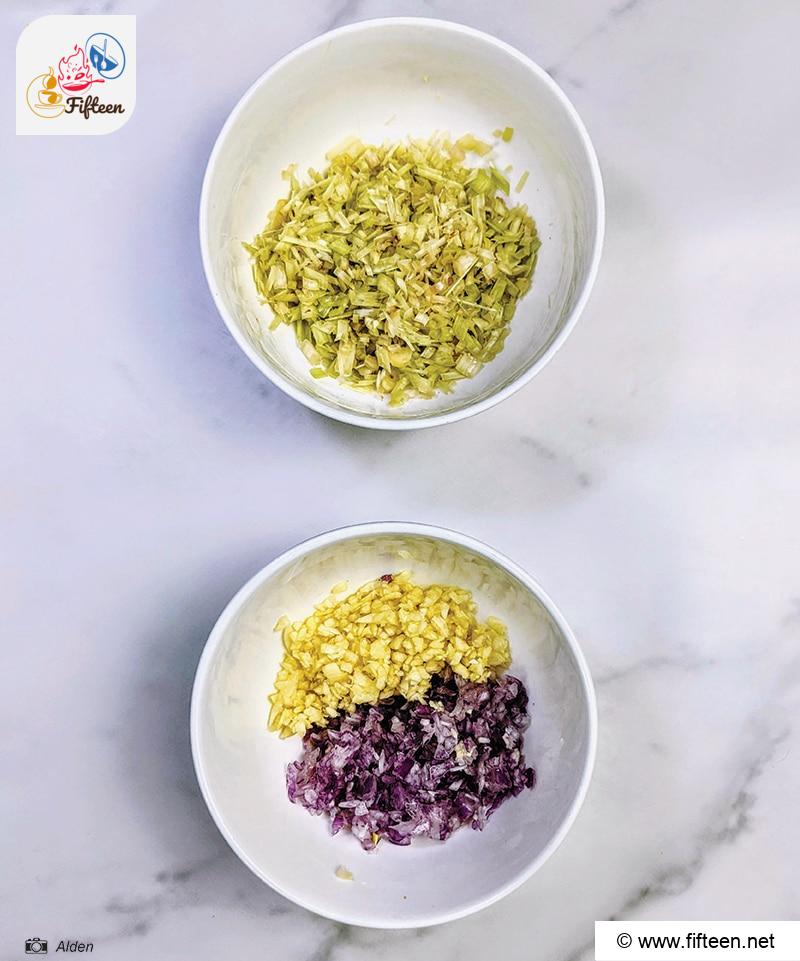
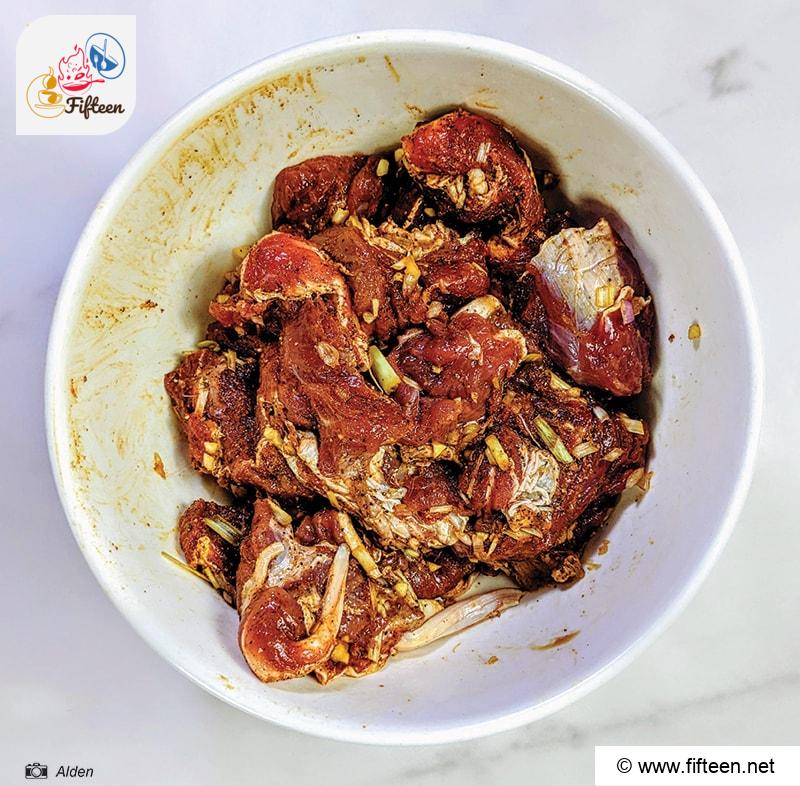
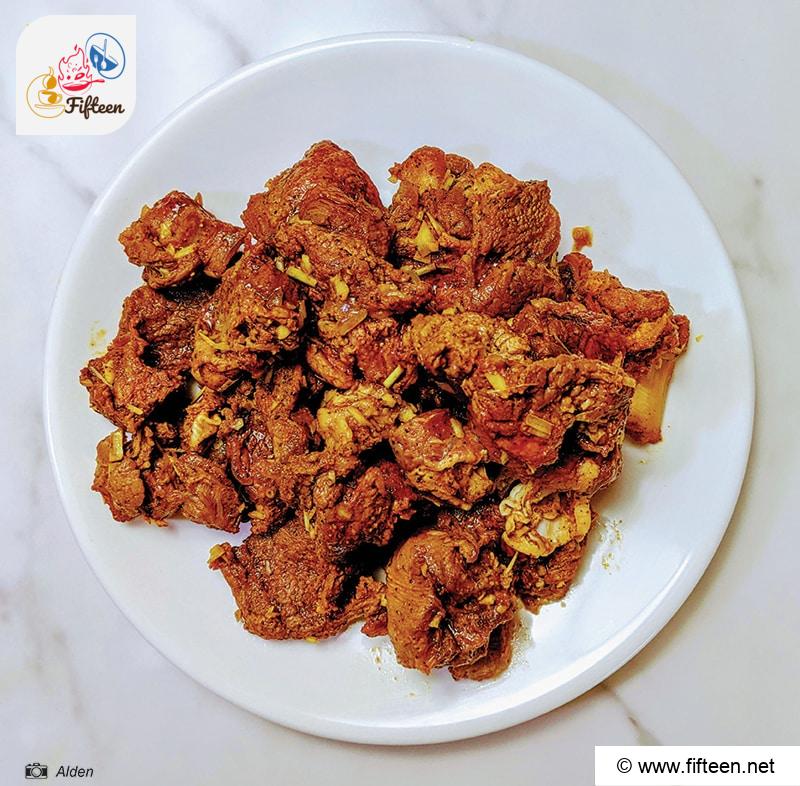
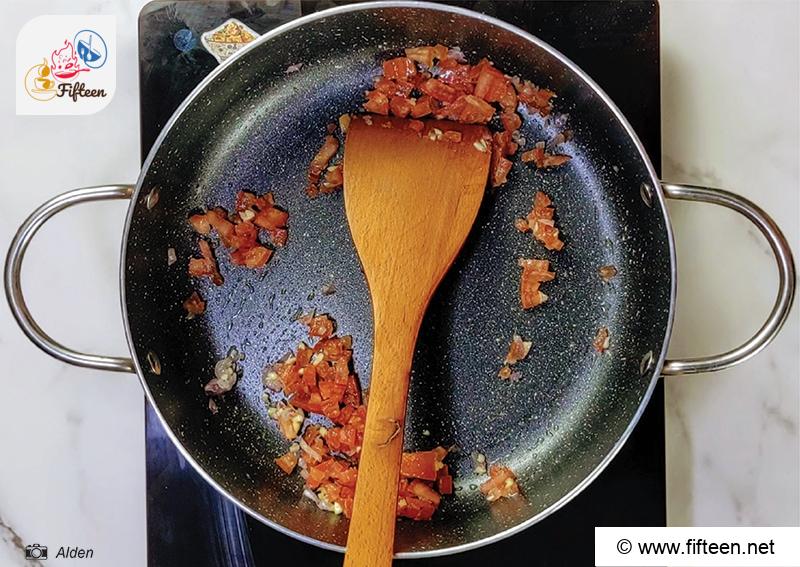
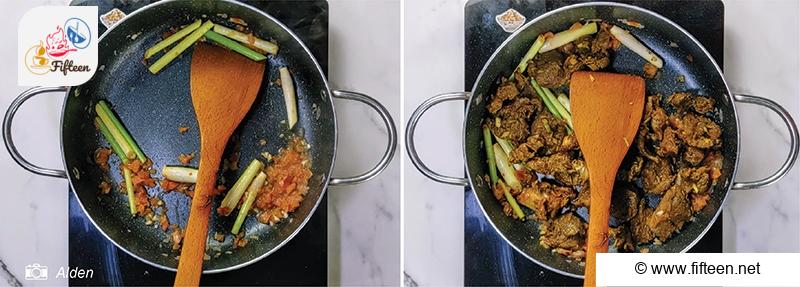
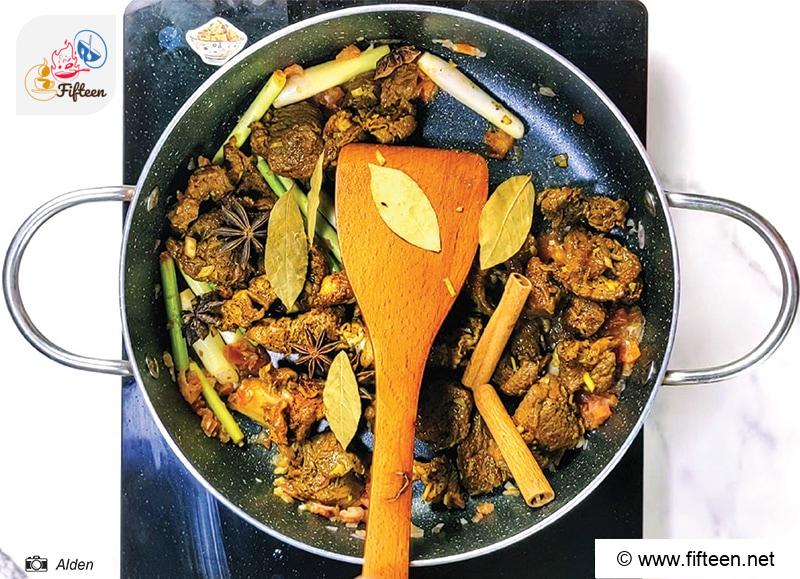
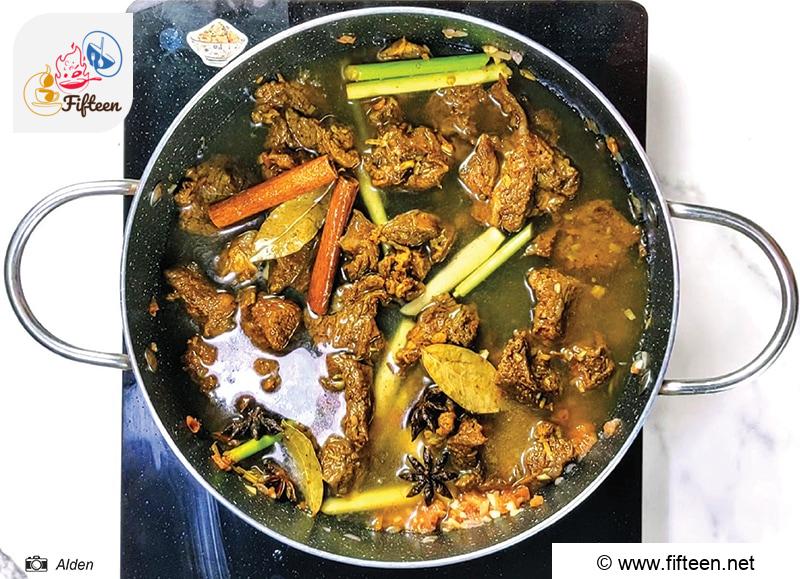
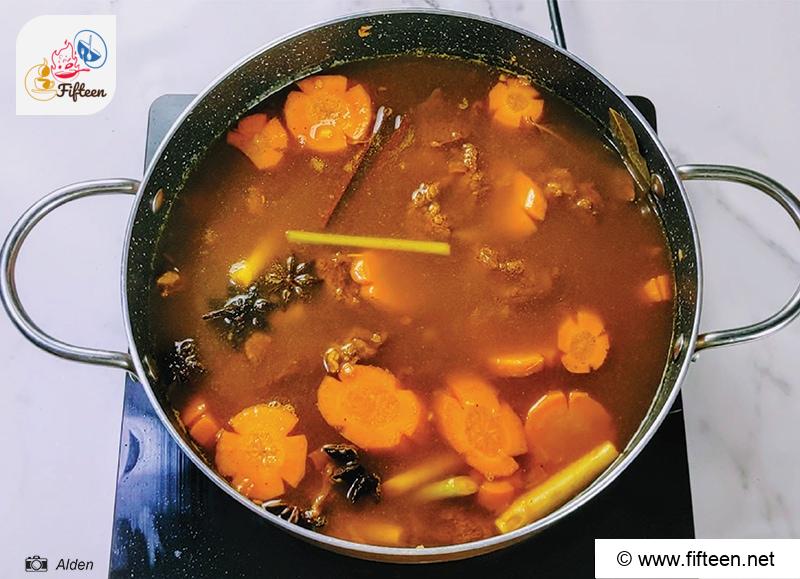
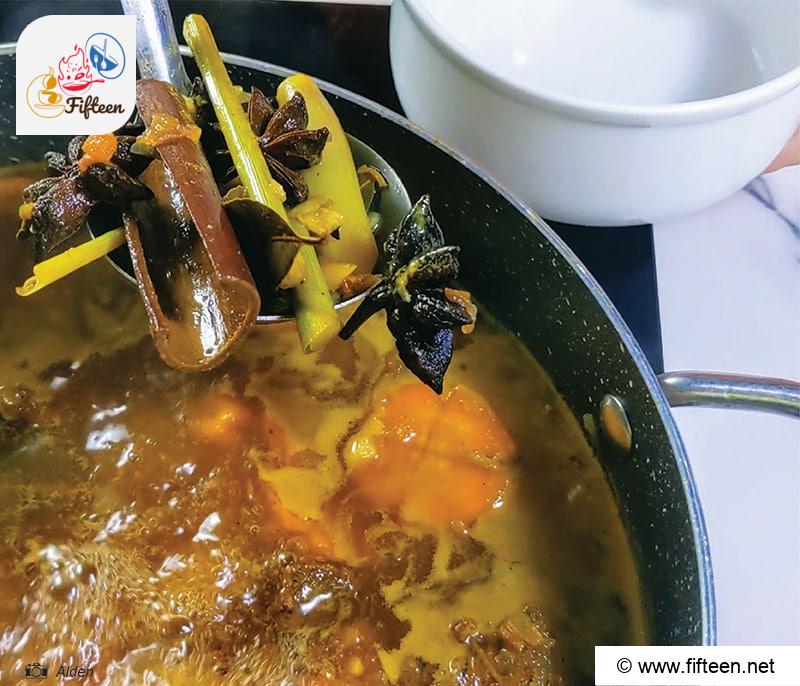
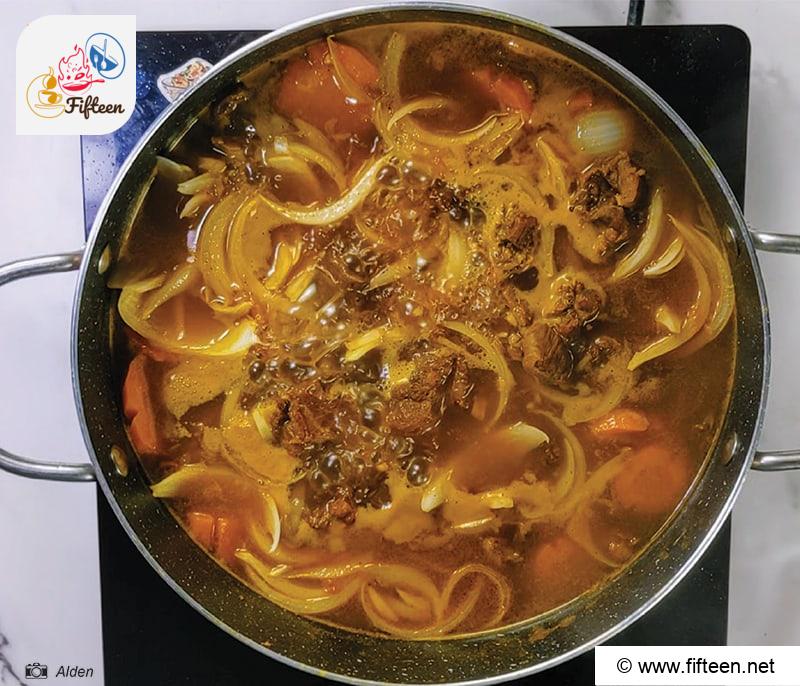
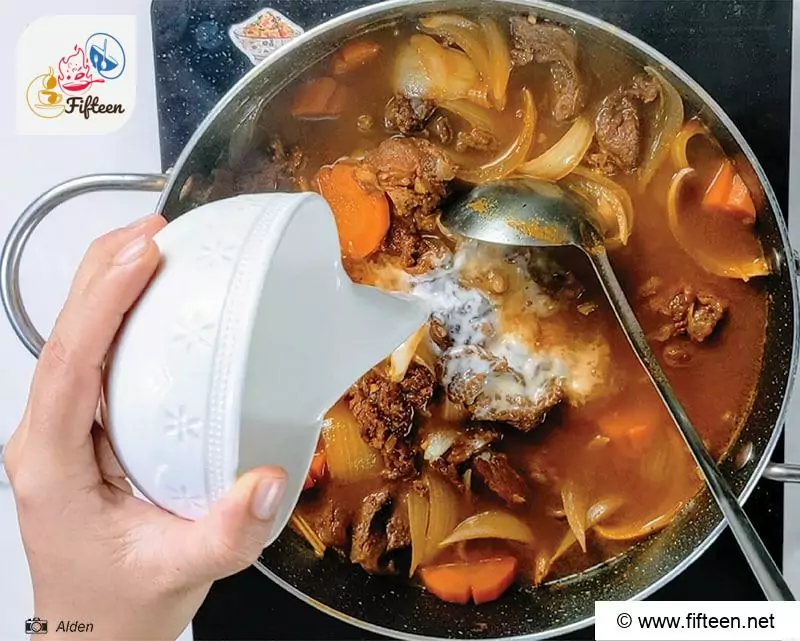
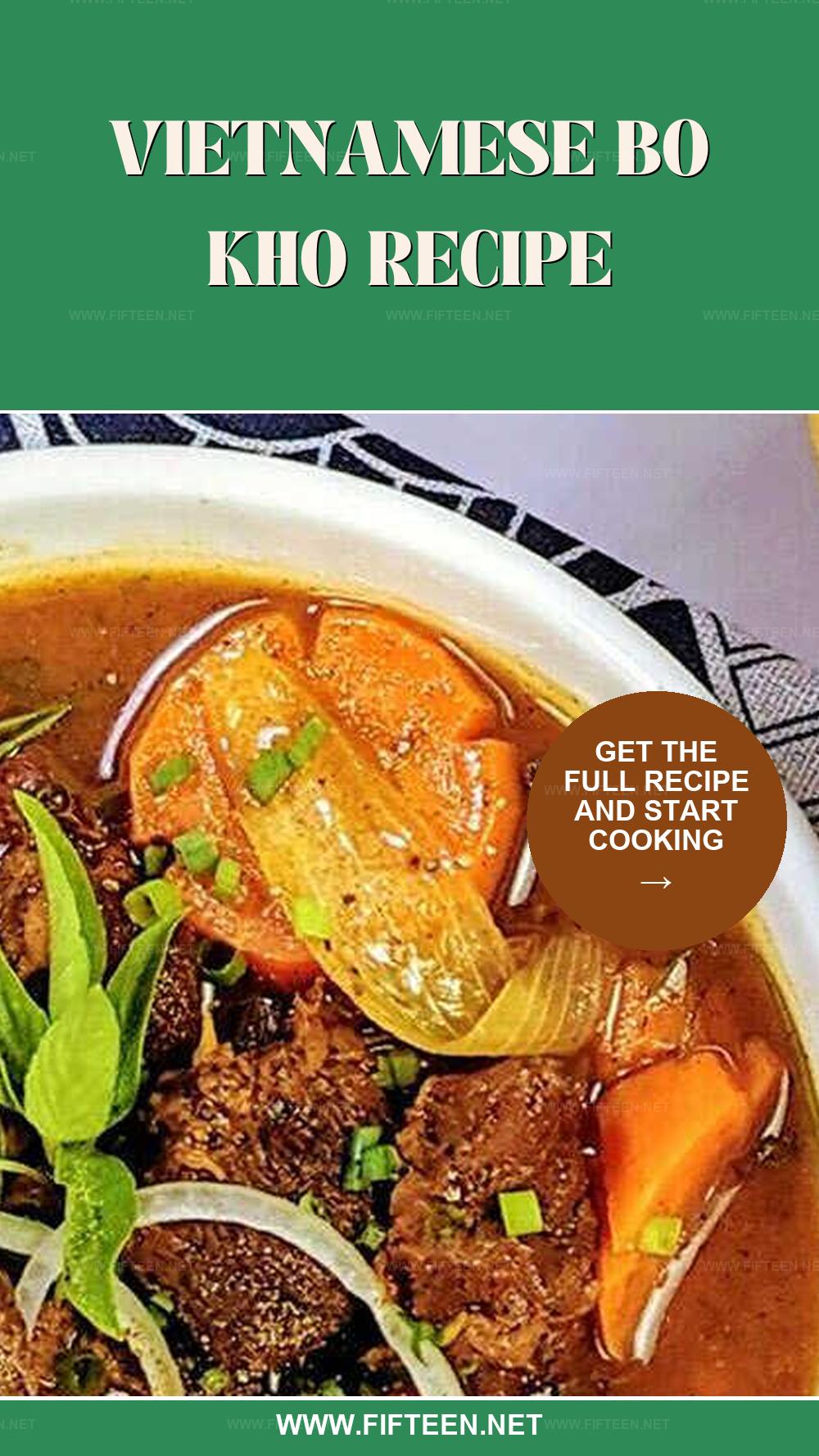
Tien – Alden
Content Writer
Expertise
Home Cooking, Recipe Development, Food Editor, Beverage Editor, Cooking-video Maker, Asian Food Content Creator
Education
Saigon Tourism College
Advanced Culinary Workshop, Beijing
Vietnamese Traditional Cooking School
American College of Vietnam
Alden is a skilled chef with expertise in Asian cuisines, known for blending traditional Vietnamese and Chinese cooking with contemporary innovations. Alden’s passion for Asian flavors and her creative approach to both food and beverages inspires fellow chefs and those aspiring to enter the field.